If you suddenly notice a black spot on your iPhone screen, it can be frustrating and concerning. Whether it's a small dark dot or a growing patch, you might wonder if it's a simple glitch or a serious hardware issue. This guide explains the most common causes of black spot on iPhone screen, possible fixes you can try at home, and when to seek professional help. Let's dive into the details.
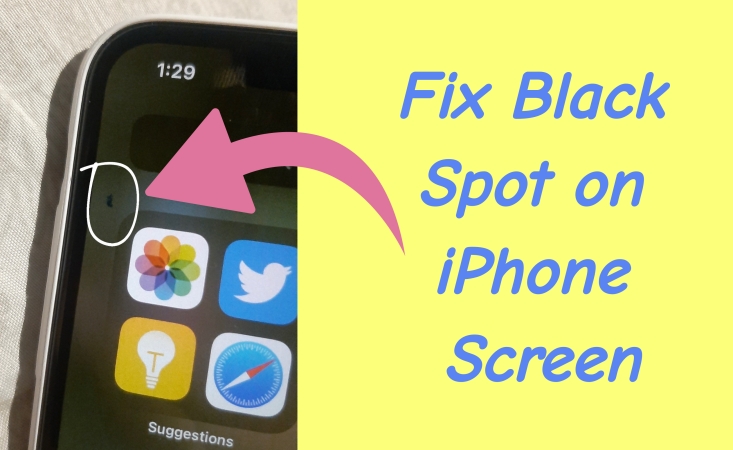
- Part 1. Why Are There Black Spots on My iPhone Screen?
- Part 2. How to Identify the Type of Black Spot on iPhone Screen
- Part 3. How to Get Rid of Black Spots from iPhone Screen
- Part 4. How to Remove Black Spots from iPhone Screen (Advanced Fixes)
- Part 5. Conclusion
Part 1. Why Are There Black Spots on My iPhone Screen?
A black spot usually means part of your iPhone's display is no longer functioning properly. It may appear due to dead pixels, liquid damage, hardware faults, or pressure damage. If you're discovered a black spot on your iPhone screen, it mainly results from:
Reason 1. Dead Pixels: Small areas of the screen that stop displaying light due to pixel malfunction.
Reason 2. Stuck Pixels: Pixels that remain black because of a software glitch or minor display defect.
Reason 3. Physical Damage: Dropping the iPhone or applying pressure may damage the LCD or OLED.
Reason 4. Liquid Damage: Spilled water or internal moisture can corrode screen components.
Reason 5. Overheating: Long-term overheating may lead to burnt screen sections.
Reason 6. Manufacturing Defects: Rare but possible, some devices may develop spots without external damage.
Part 2. How to Identify the Type of Black Spot on iPhone Screen
Sometimes, a black spot is just a minor stuck pixel, but other times it signals deeper hardware damage. So, before attempting fixes, you must identify whether the black spot is caused by software or hardware.
- Software Issue Signs: The spot changes or disappears when the screen refreshes, rotates, or when brightness is adjusted.
- Hardware Issue Signs: The black spot remains fixed in place and does not change with any settings on the device.
Pro Tip:
Take a screenshot and view it on another device. If the spot does not appear in the screenshot, the issue is hardware-related.
Part 3. How to Get Rid of Black Spots from iPhone Screen
If a black spot on your iPhone screen is caused by improper settings or software glitches, it's easy to get rid of it by following simple troubleshooting steps at home. See more details.
Solution 1. Restart Your iPhone
Sometimes, a simple restart can fix stuck pixels caused by temporary or minor glitches on the iPhone. Here's how to restart an iPhone.
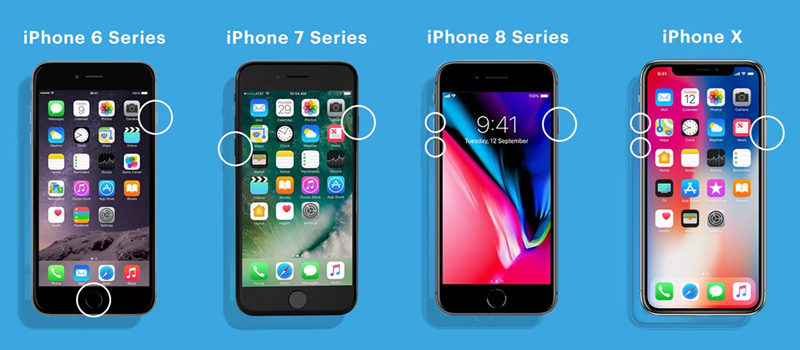
Step 1. Press and hold the Power button, then slide to power off.
Step 2. Restart after 30 seconds and check the screen.
Solution 2. Clean the Screen
For small black or stuck pixels, gently massaging the area may help. After turning off your iPhone, use a soft microfiber cloth and apply light circular pressure on the spot for a few seconds. Then restart the device and check if the spot improves.
Solution 3. Update iOS Version
Apple often releases software updates like iOS 18 or iOS 26 that fix screen screen bugs. Ensure your iPhone is running the latest iOS.
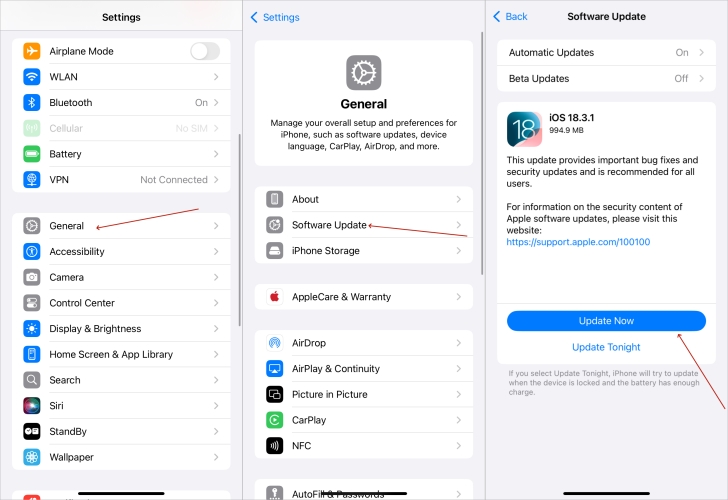
Step 1. Go to Settings > General > Software Update.
Step 2. Tap Download and Install to download updates.
Step 3. Tap Install Now and enter the screen passcode to confirm.
Solution 4. Use a Pixel Fixing App
Several third-party apps like Pixel Control flash RGB colors rapidly on your display, which may free stuck pixels. It works best for stuck pixels, but won't repair dead pixels or physical damage.
Step 1. Download Pixel Control or other pixel fixer apps from the App Store.
Step 2. Run the app on the phone for several minutes.
Step 3. Check if the spot fades away.
Solution 5. Reset All Settings
Some wrong or improper display settings can cause your display to develop a black spot. In this case, resetting all settings may help a lot.
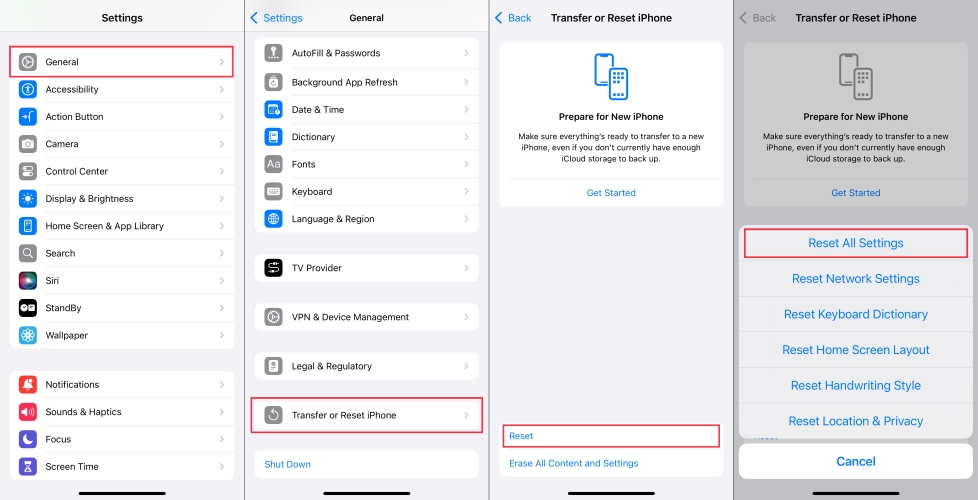
Step 1. Open Settings and tap Genera > Transfer or Reset iPhone.
Step 2. Tap Reset iPhone and select Reset All Settings.
Step 3. Enter the screen passcode and tap Reset to confirm.
Solution 6. Factory Reset iPhone [Data Loss]
Sometimes, a full reset may fix software-related bugs or glitches, causing a black spot on your iPhone screen. Backup your iPhone first, then start a factory reset.
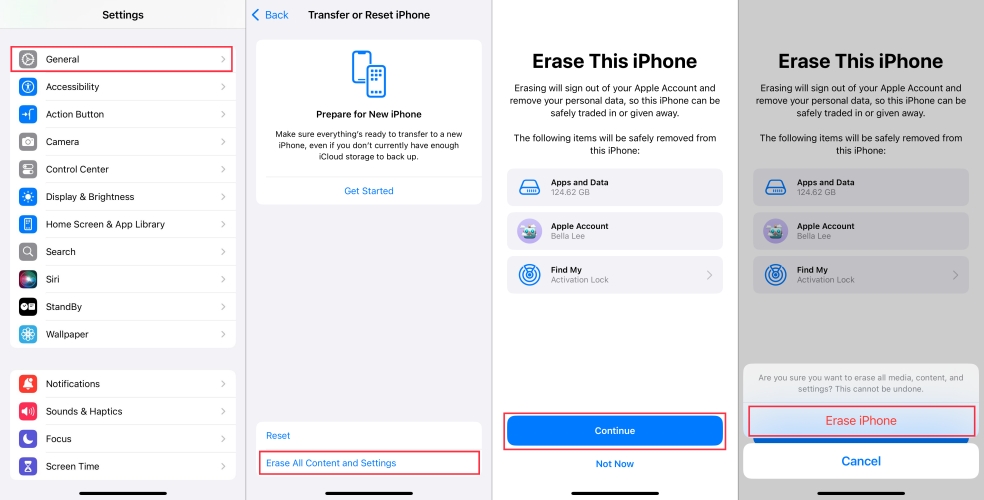
Step 1. In the Settings, tap General > Transfer or Reset iPhone.
Step 2. Tap Erase All Content and Settings > Continue.
Step 3. Enter the screen passcode or Apple ID password to disable Find My.
Step 4. Tap Reset to confirm and wait for a full reset.
Solution 7. Use a Repair Tool [No Data Loss]
Instead of performing a full reset, a third-party repair tool like MagFone iOS System Recovery can fix some complicated system glitches that cause a black spot to appear on your iPhone. With such a tool, you can efficiently get rid of black spots on iPhone screen while not losing any data on the device. Most importantly, it's an intuitive, user-friendly repair tool for non-tech navvy. Follow the steps below to start fixing black spot on iPhone screen.
MagFone iOS System Recovery
Fix various iOS and iPadOS system issues, such as black screen, boot loop, frozen screen, or stuck on Apple logo, without data loss.
Step 1 Run MagFone iOS System Recovery
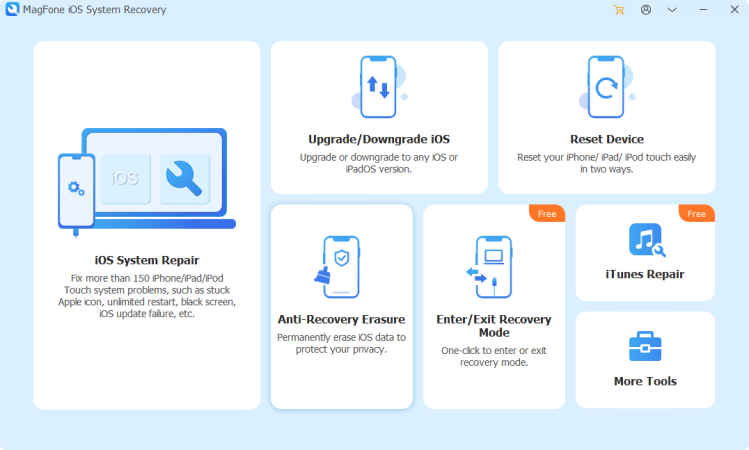
Download and install MagFone iOS System Recovery on your computer, then launch it and click the iOS System Repair button. Continue to connect your iPhone and computer through a USB cable. Wait for your device to be recognized.
Step 2 Go to Put iPhone into Recovery Mode
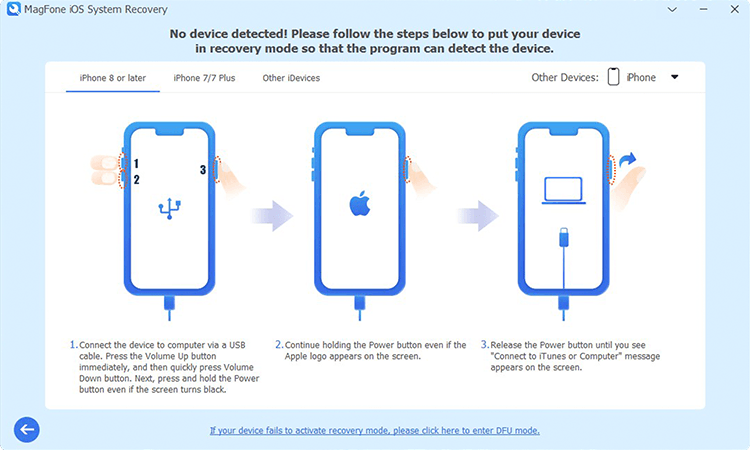
Select the Standard Repair Mode, and you'll be asked to put your iPhone into recovery mode. By following the onscreen instruction, you can get your device into recovery mode. If it fails, turn to put your device into DFU mode.
Step 3 Download the Firmware Package for iPhone
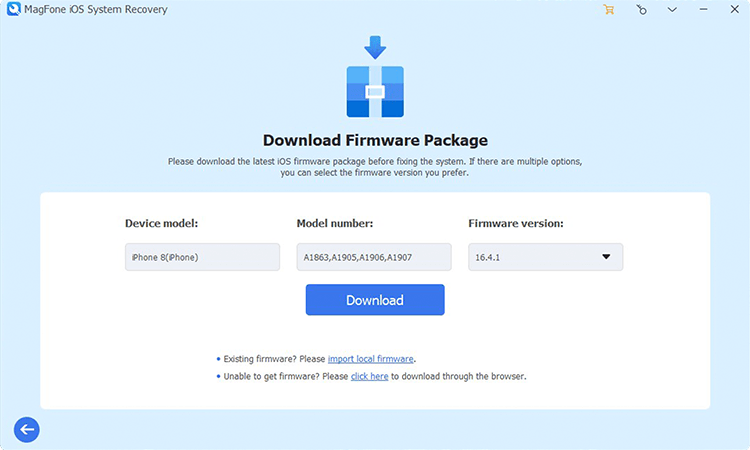
Proceed to check the device information shown on the screen. Then select the firmware version and click the Download button to download the firmware package. Then the firmware package will be saved to the computer.
Step 4 Start to Fix Black Spot on iPhone
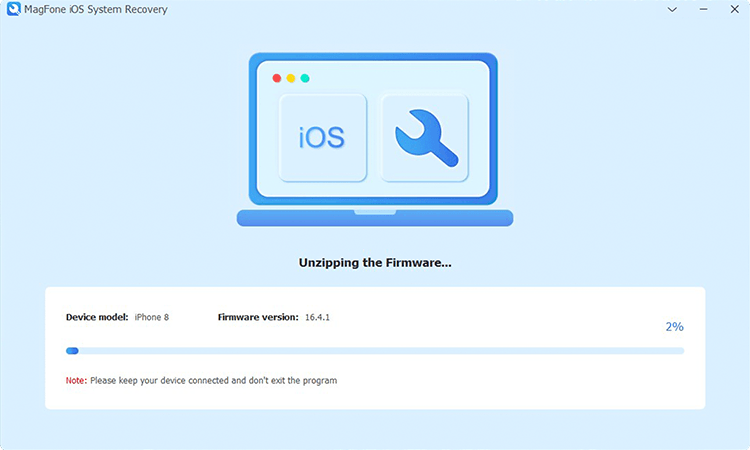
Go to unzip and verify the firmware package by clicking the Repair button. After that, MagFone software will continue to resolve the black spot on iPhone issue. In the whole process, keep your device connected.
Part 4. How to Remove Black Spots from iPhone Screen (Advanced Fixes)
If the black spot on your iPhone doesn't go away, spreads, or affects touch response, it's time to consider repair. Here are your repair options to remove black spots from your iPhone screen.
Option 1. Professional Cleaning for Liquid Damage
If liquid damage is suspected, do not attempt to open the device yourself. Visit a professional repair service for cleaning and inspection.
Option 2. AppleCare+ or Warranty Claim
If your iPhone is still under warranty or has AppleCare+, you can contact Apple Support or schedule a repair to fix the screen issue.
Option 3. Screen Replacement
If the black spot is caused by LCD or OLED damage, the only permanent fix is a screen replacement. For minor spots, this might not be urgent if you can mind. For larger or spreading spots, replacement is necessary. You can replace the screen via:
- With AppleCare+: Around $29 for screen-only damage.
- Without AppleCare+: From $229 to $379 varying by model and region.
- Third-party repair shops: Often $100–$200 depending on parts and labor.
Part 5. Conclusion
A black spot on your iPhone screen may be caused by simple stuck pixels or more severe hardware damage. Start with simple troubleshooting steps like restarting, updating, or using a third-party repair tool like MagFone iOS System Recovery. If these do not help, a professional screen replacement is the most reliable fix.

